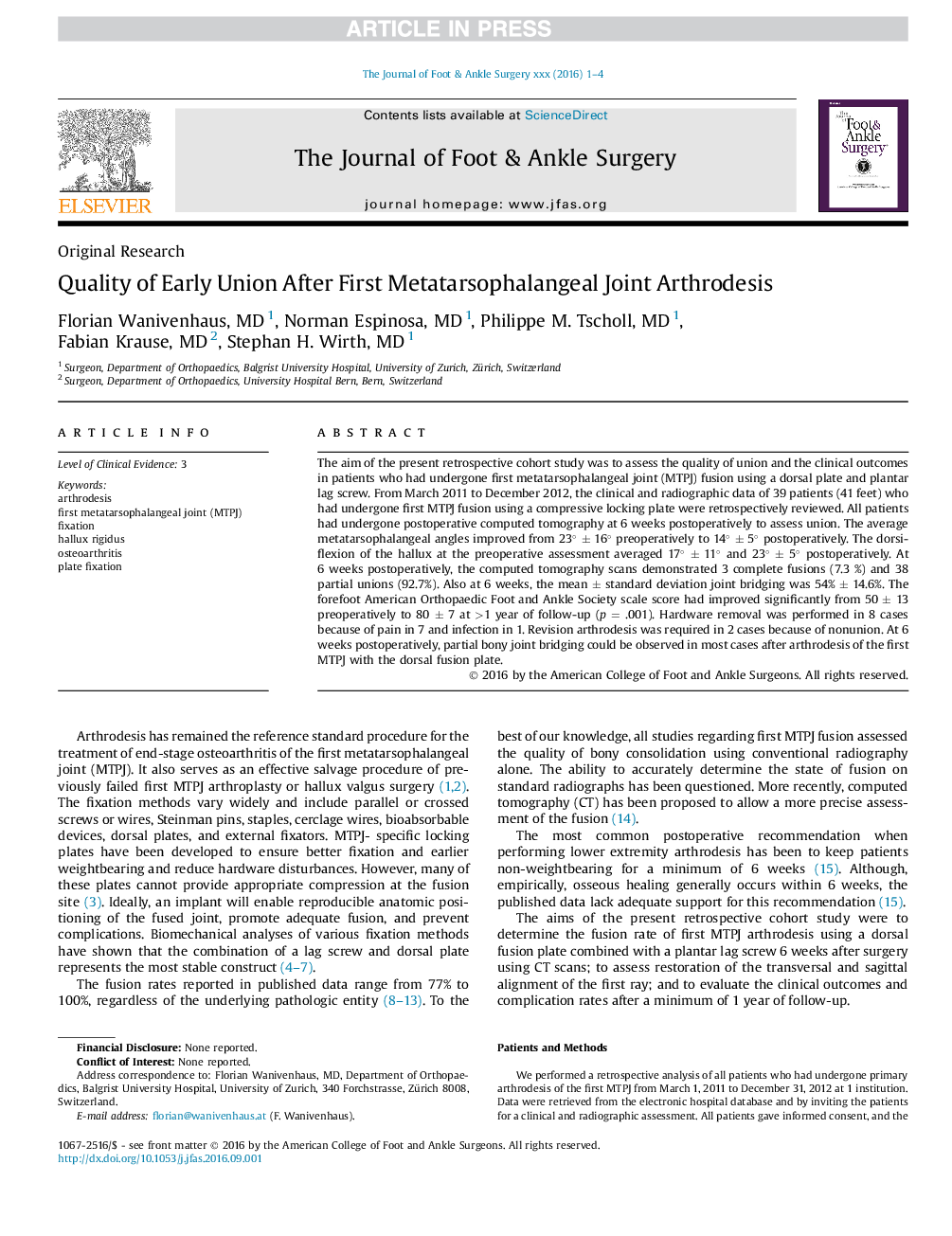| Article ID | Journal | Published Year | Pages | File Type |
|---|---|---|---|---|
| 5576181 | The Journal of Foot and Ankle Surgery | 2017 | 4 Pages |
Abstract
The aim of the present retrospective cohort study was to assess the quality of union and the clinical outcomes in patients who had undergone first metatarsophalangeal joint (MTPJ) fusion using a dorsal plate and plantar lag screw. From March 2011 to December 2012, the clinical and radiographic data of 39 patients (41 feet) who had undergone first MTPJ fusion using a compressive locking plate were retrospectively reviewed. All patients had undergone postoperative computed tomography at 6 weeks postoperatively to assess union. The average metatarsophalangeal angles improved from 23° ± 16° preoperatively to 14° ± 5° postoperatively. The dorsiflexion of the hallux at the preoperative assessment averaged 17° ± 11° and 23° ± 5° postoperatively. At 6 weeks postoperatively, the computed tomography scans demonstrated 3 complete fusions (7.3 %) and 38 partial unions (92.7%). Also at 6 weeks, the mean ± standard deviation joint bridging was 54% ± 14.6%. The forefoot American Orthopaedic Foot and Ankle Society scale score had improved significantly from 50 ± 13 preoperatively to 80 ± 7 at >1 year of follow-up (p = .001). Hardware removal was performed in 8 cases because of pain in 7 and infection in 1. Revision arthrodesis was required in 2 cases because of nonunion. At 6 weeks postoperatively, partial bony joint bridging could be observed in most cases after arthrodesis of the first MTPJ with the dorsal fusion plate.
Related Topics
Health Sciences
Medicine and Dentistry
Orthopedics, Sports Medicine and Rehabilitation
Authors
Florian MD, Norman MD, Philippe M. MD, Fabian MD, Stephan H. MD,
